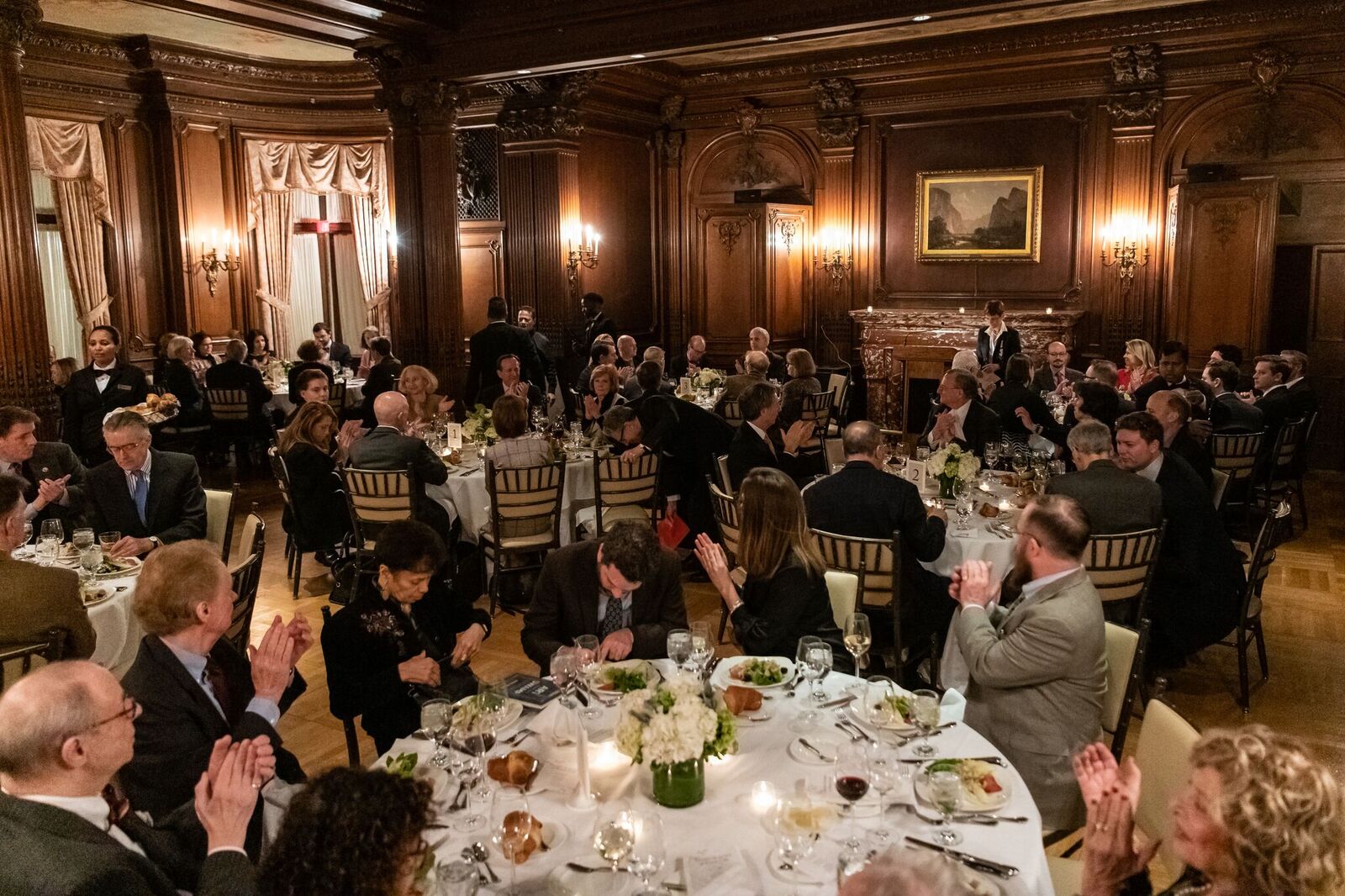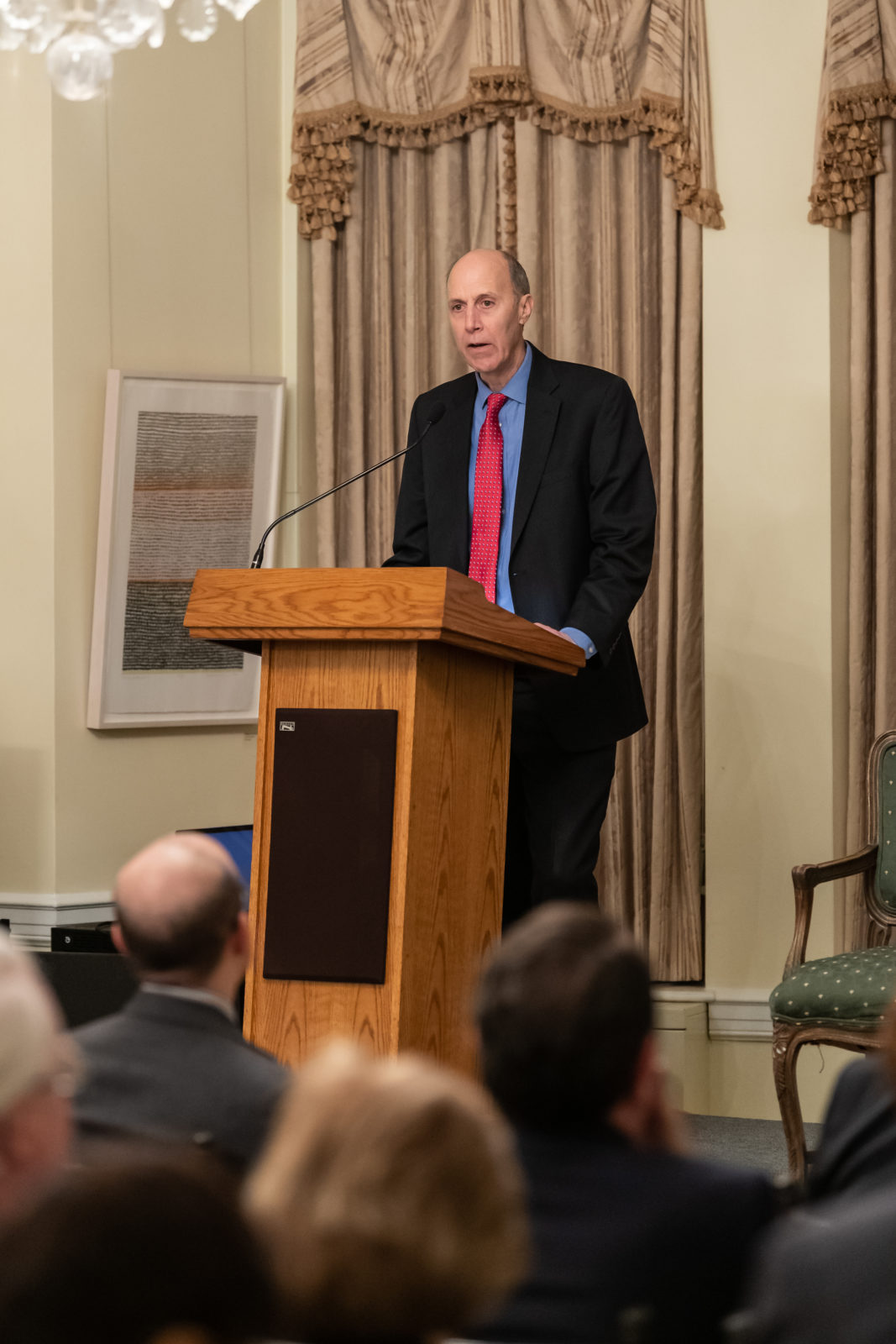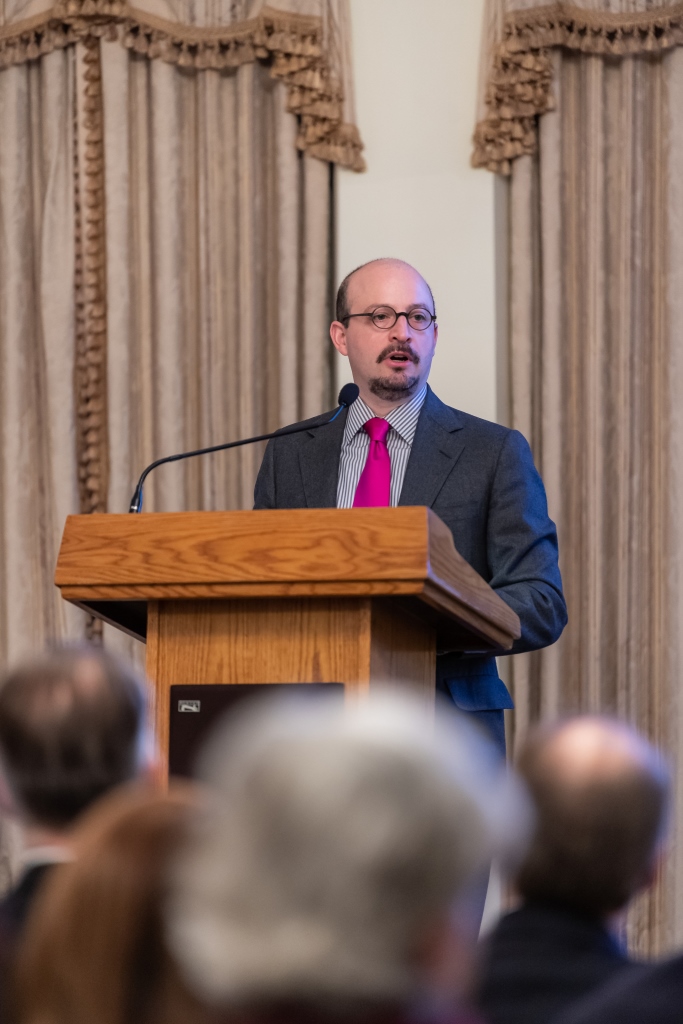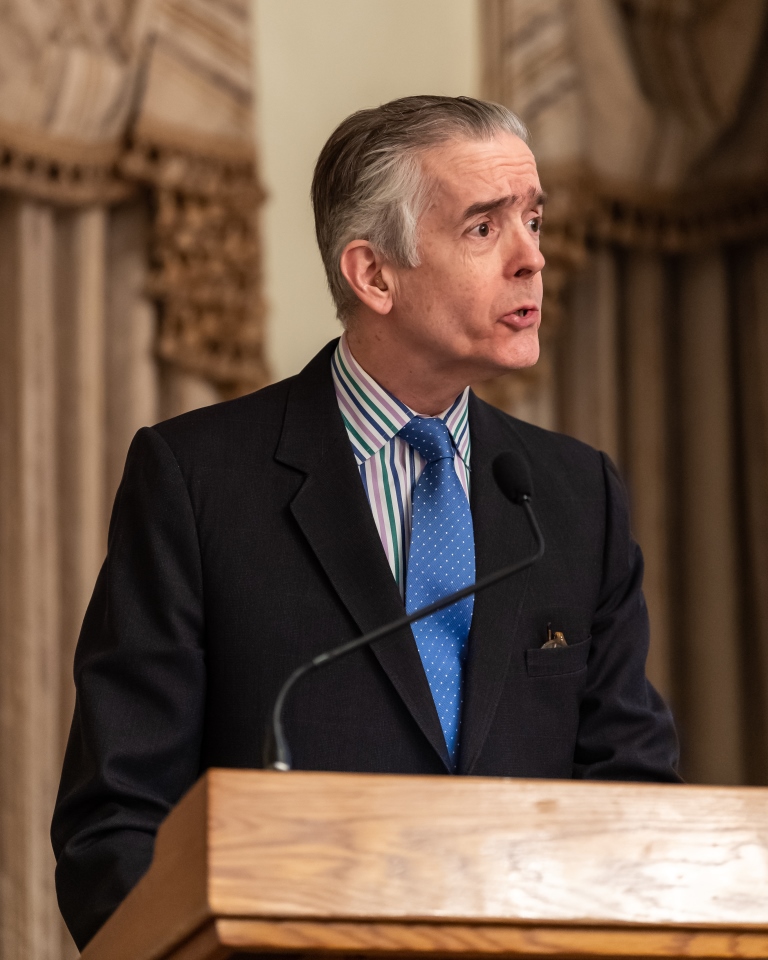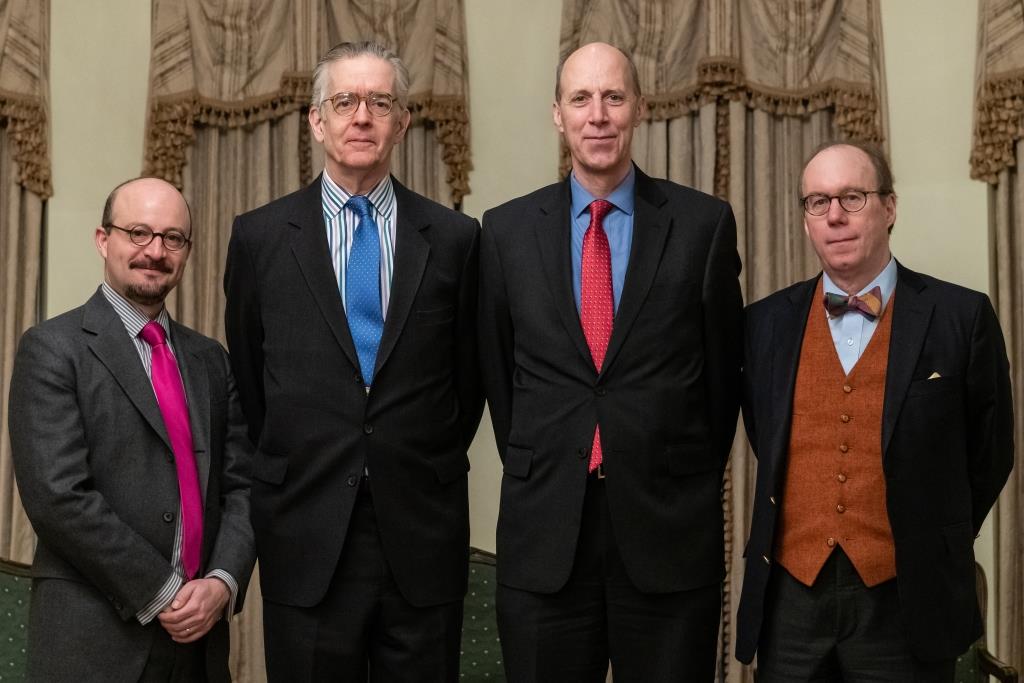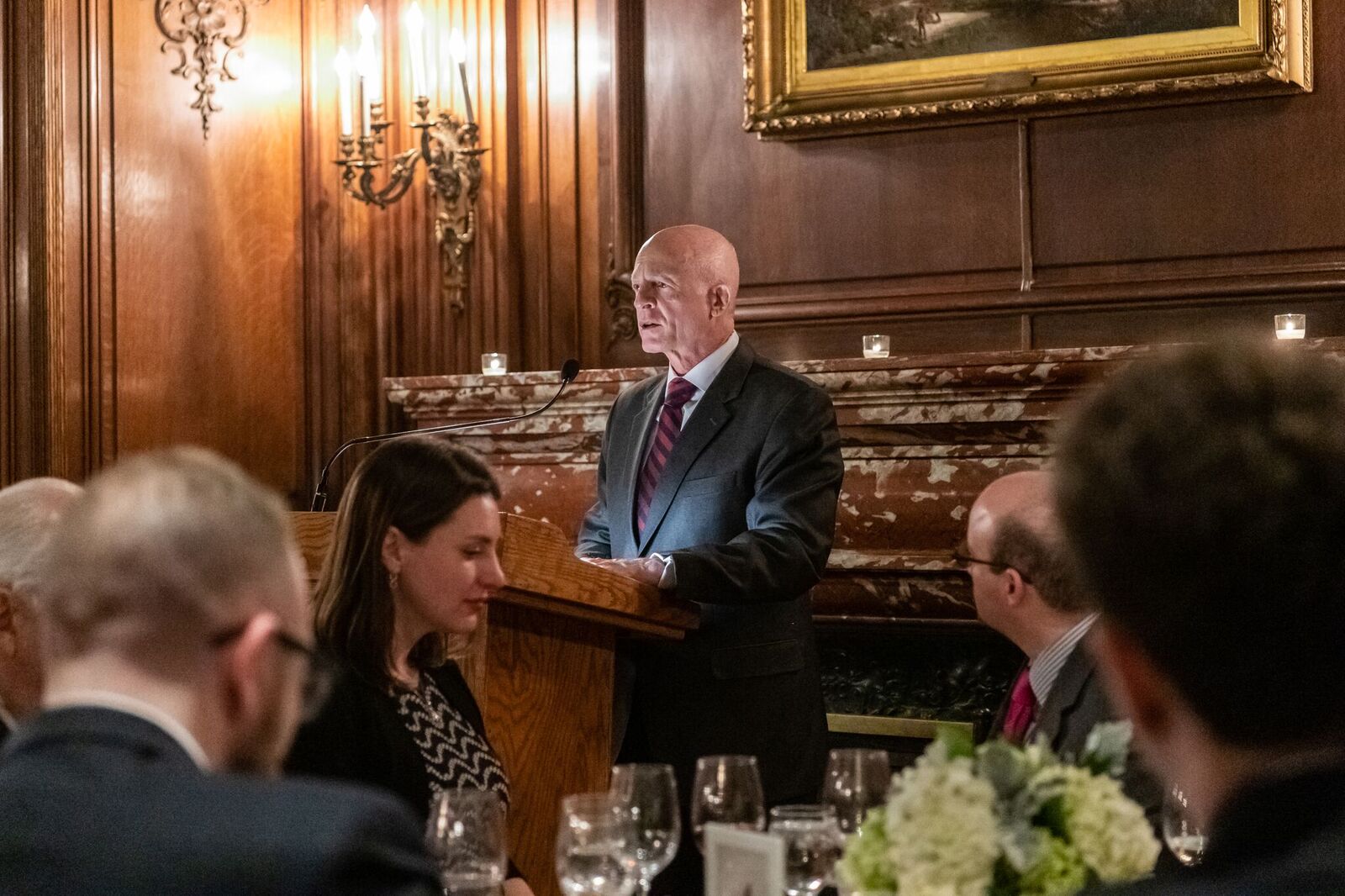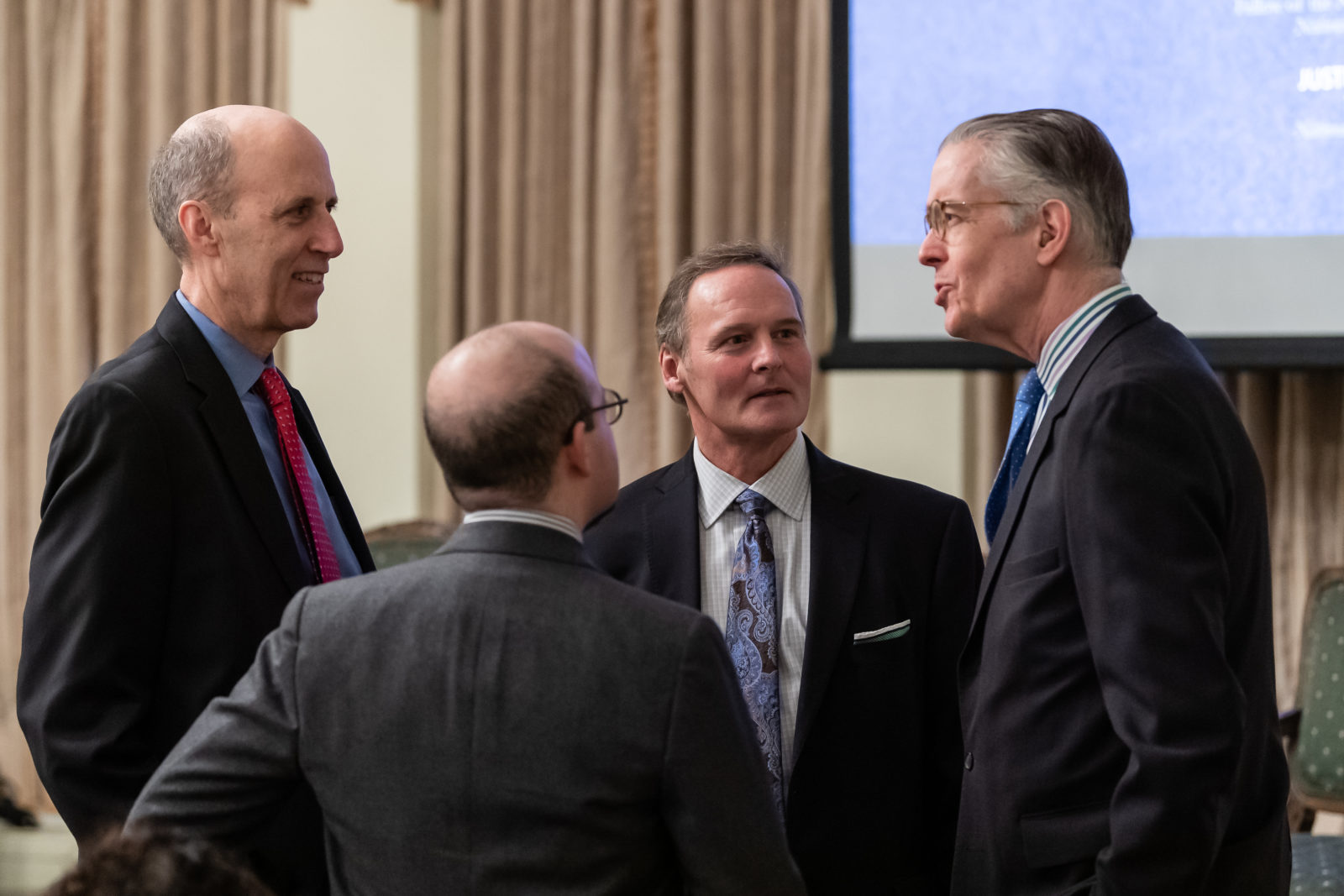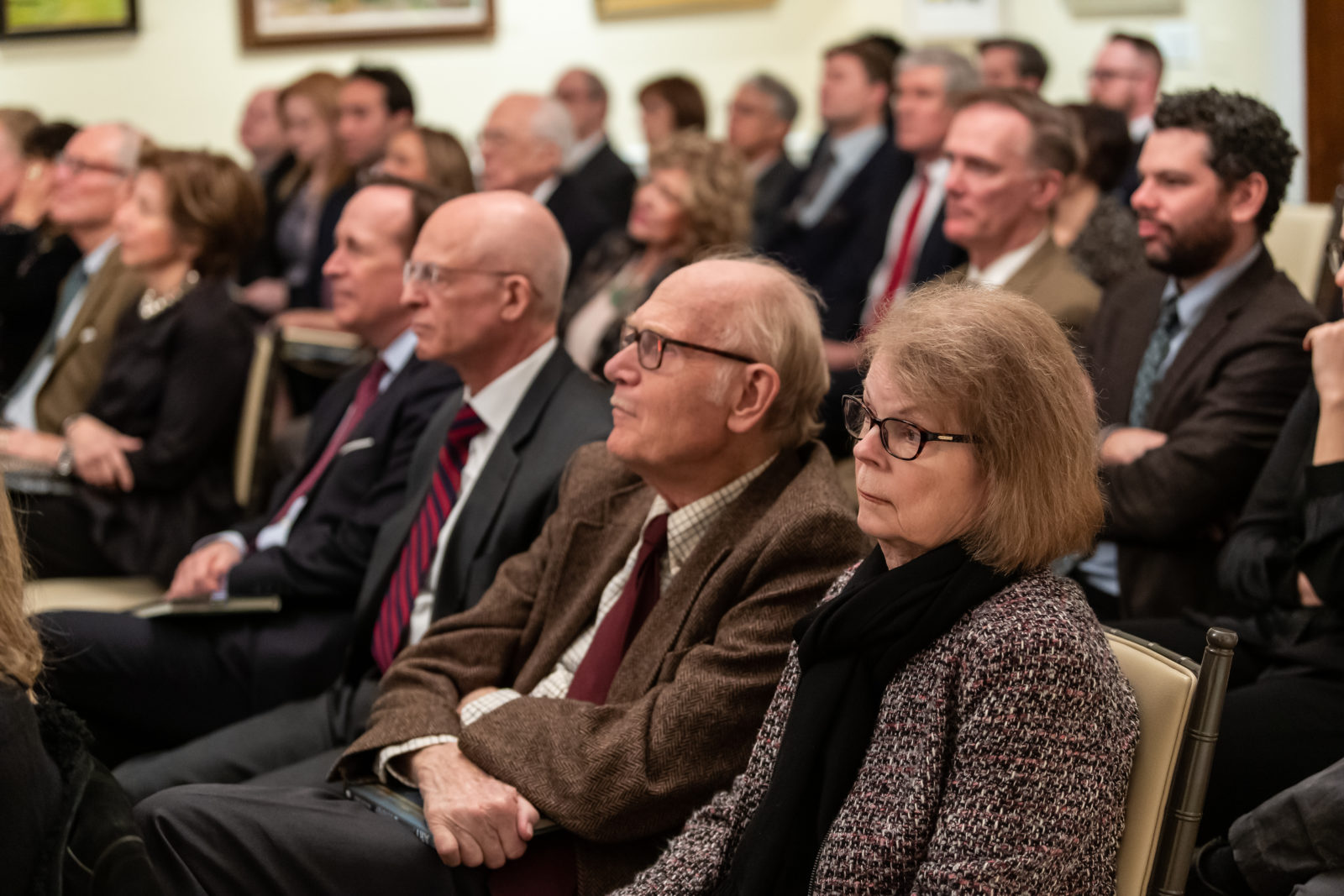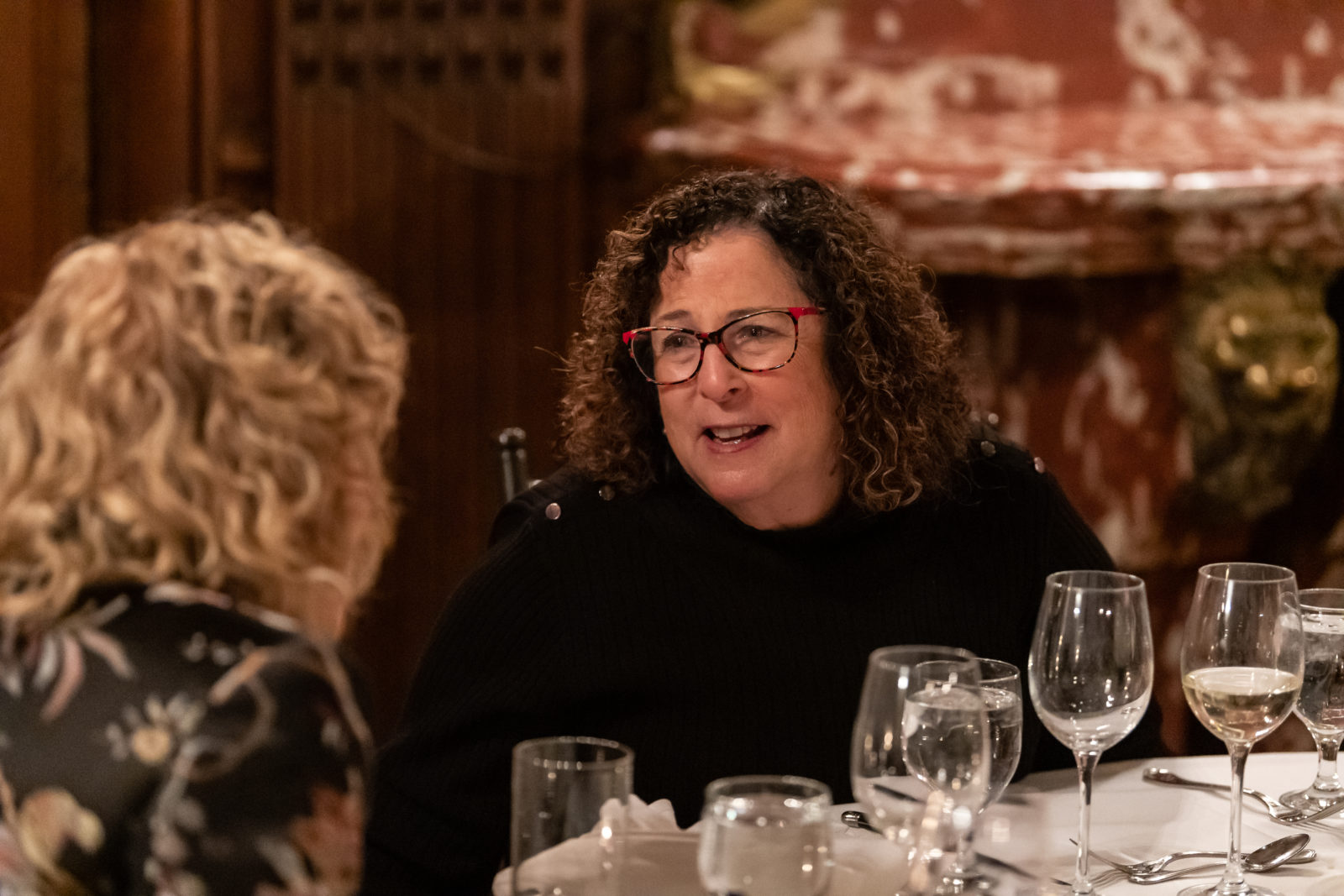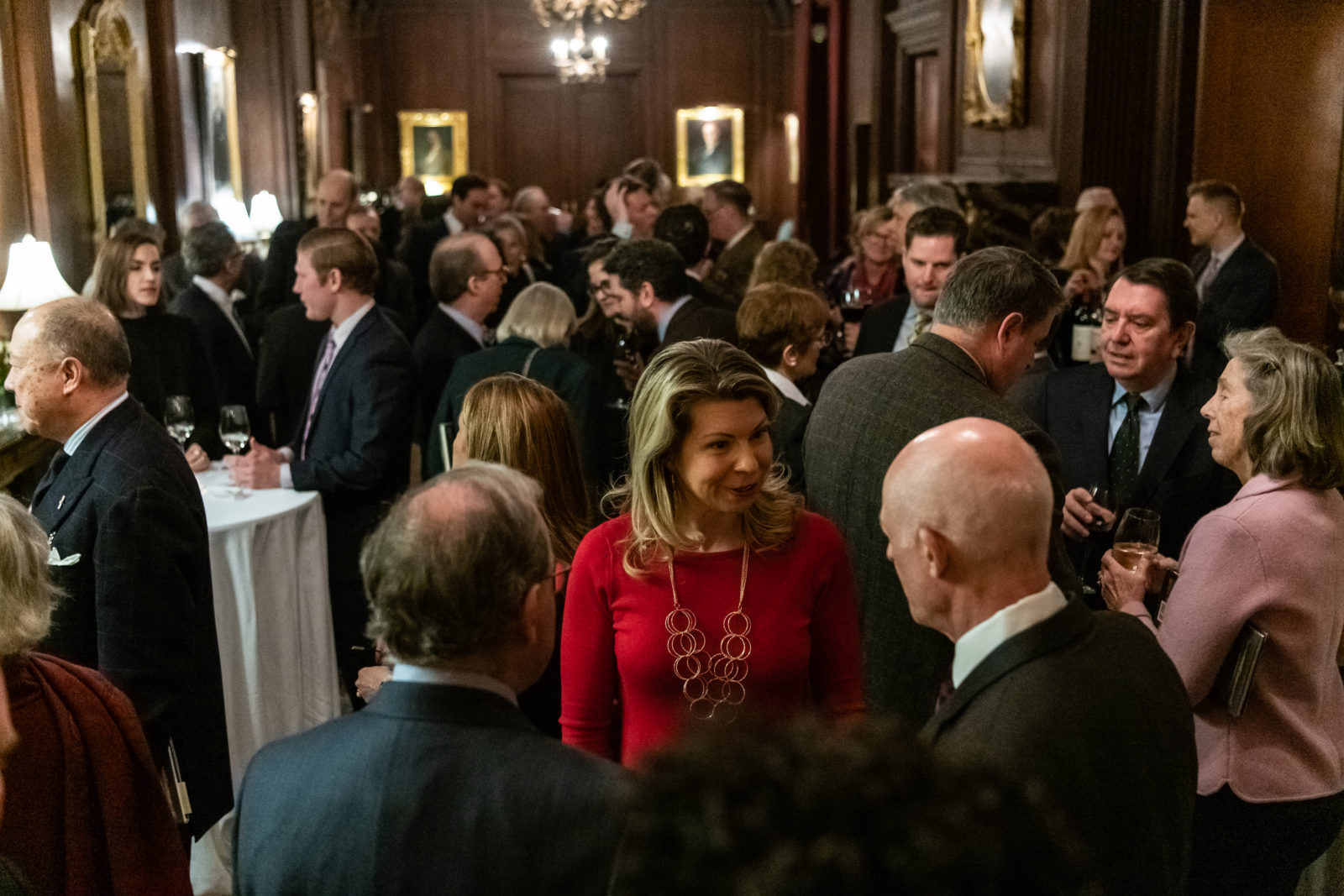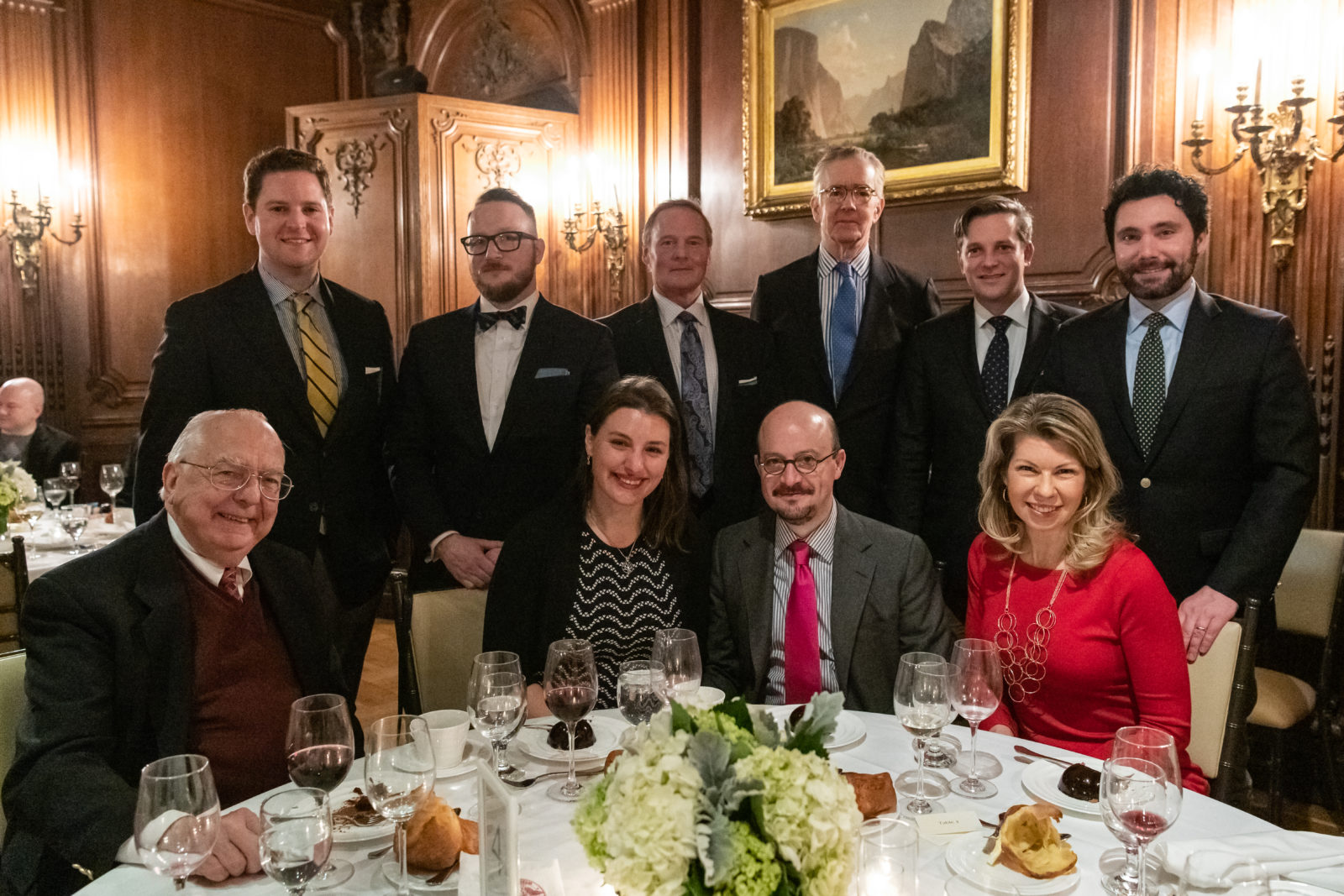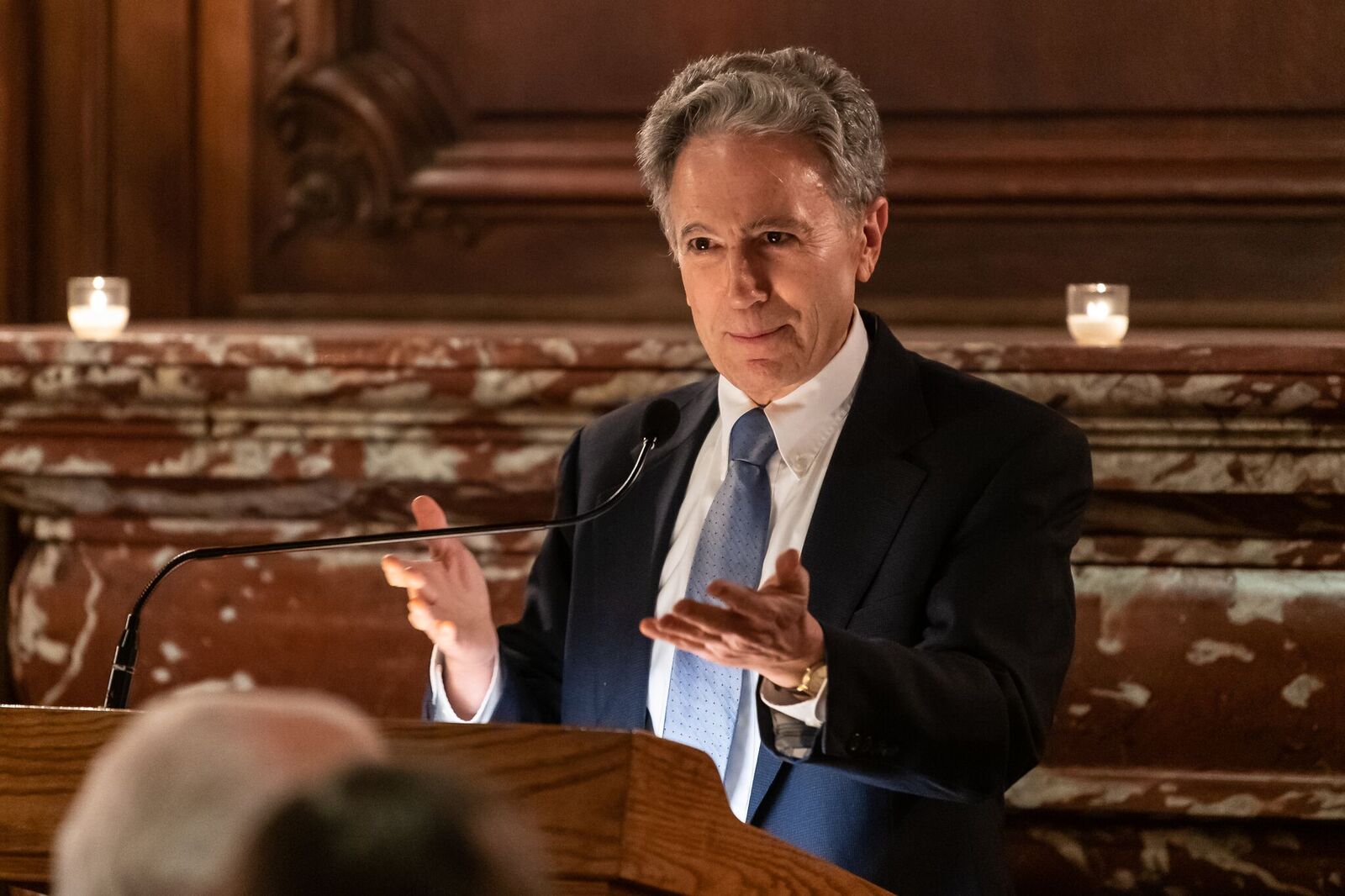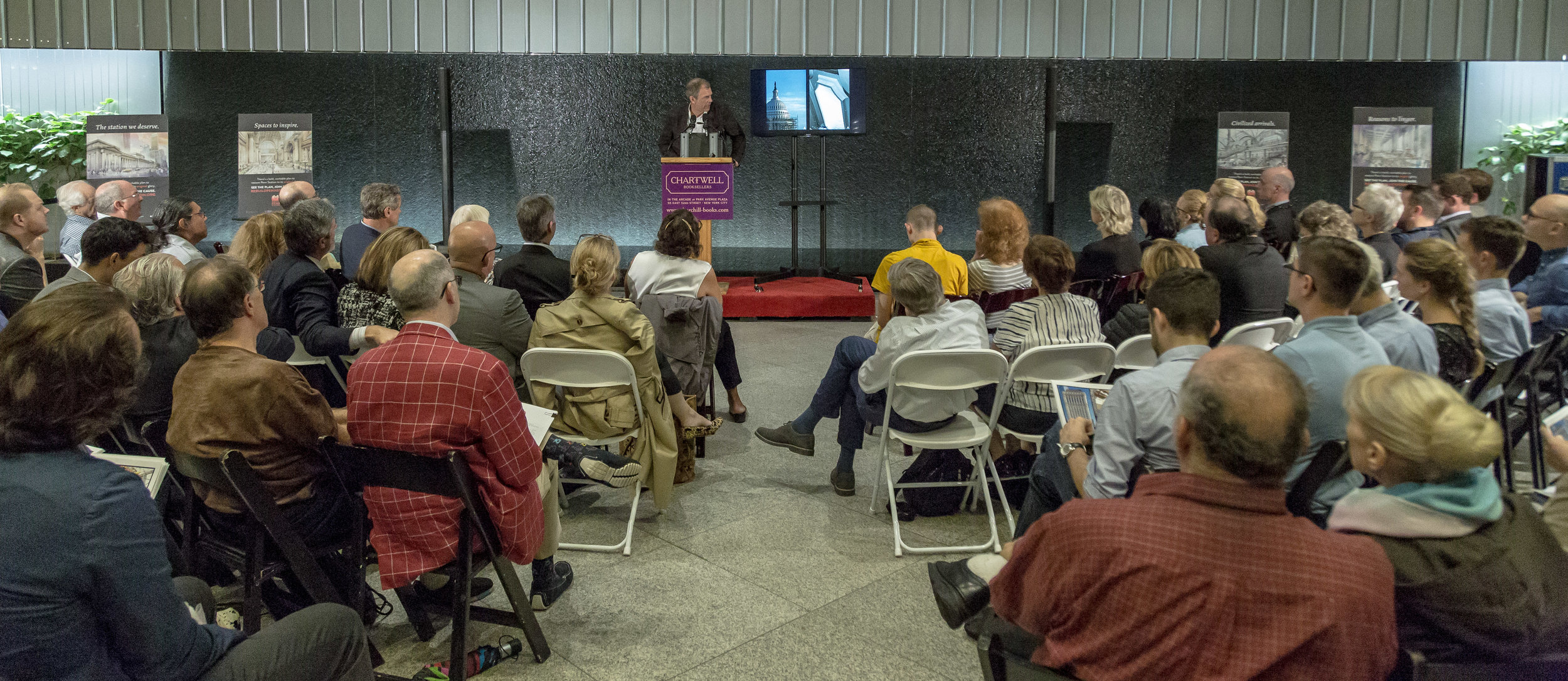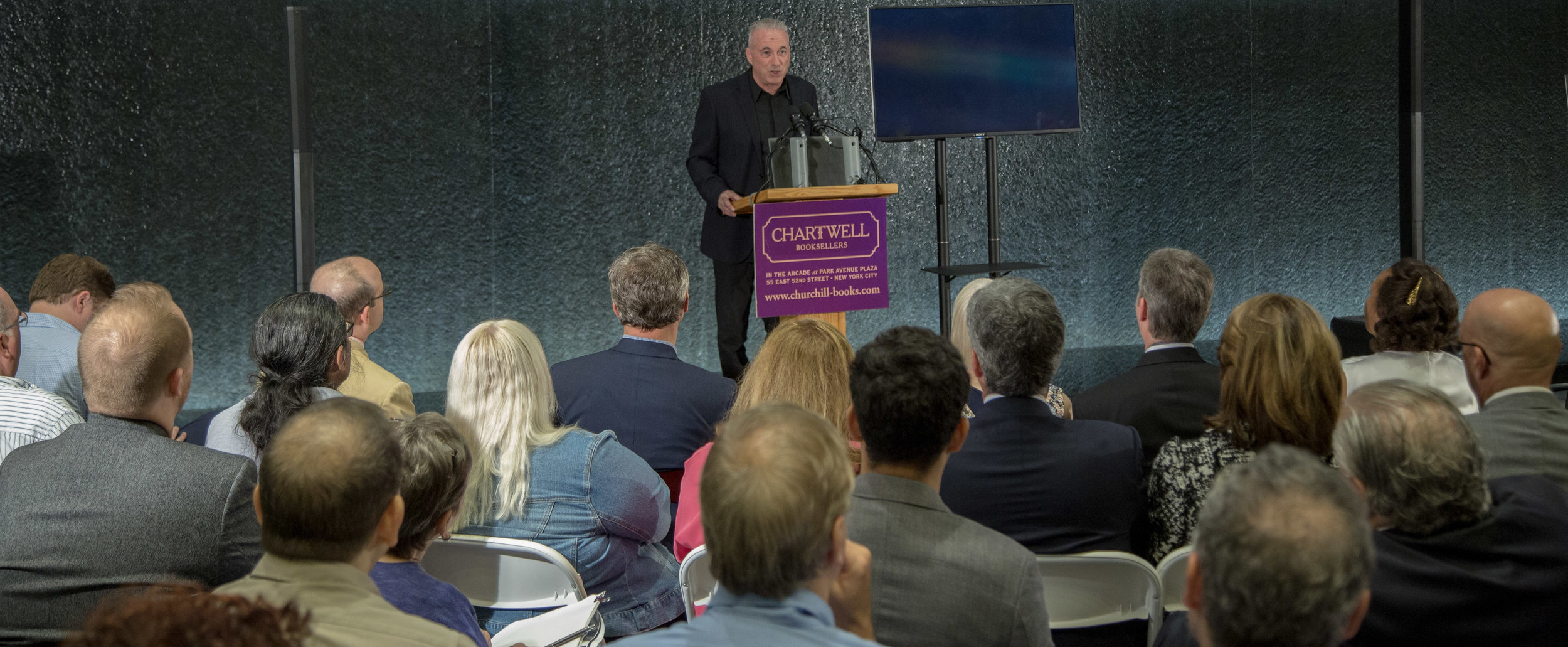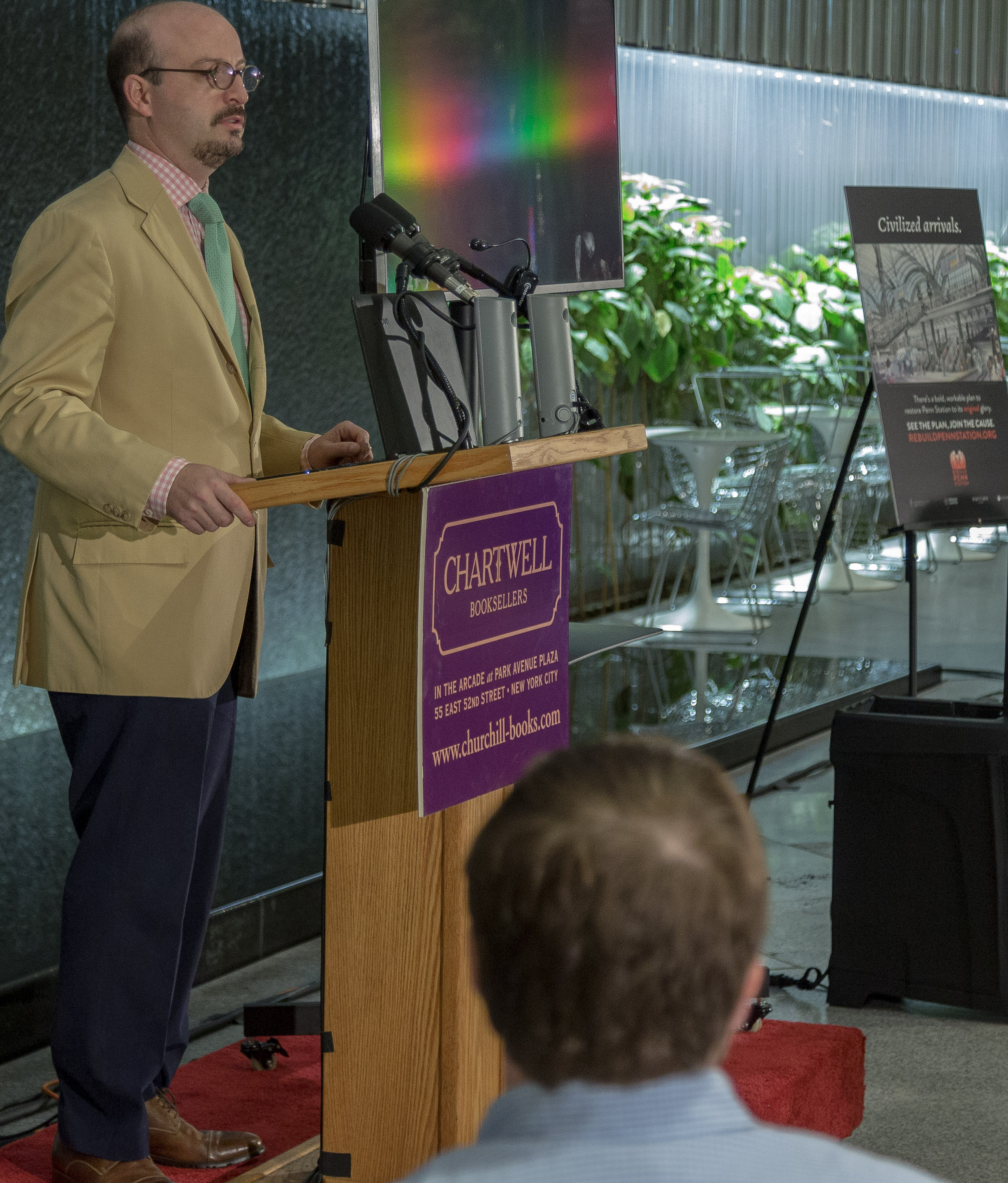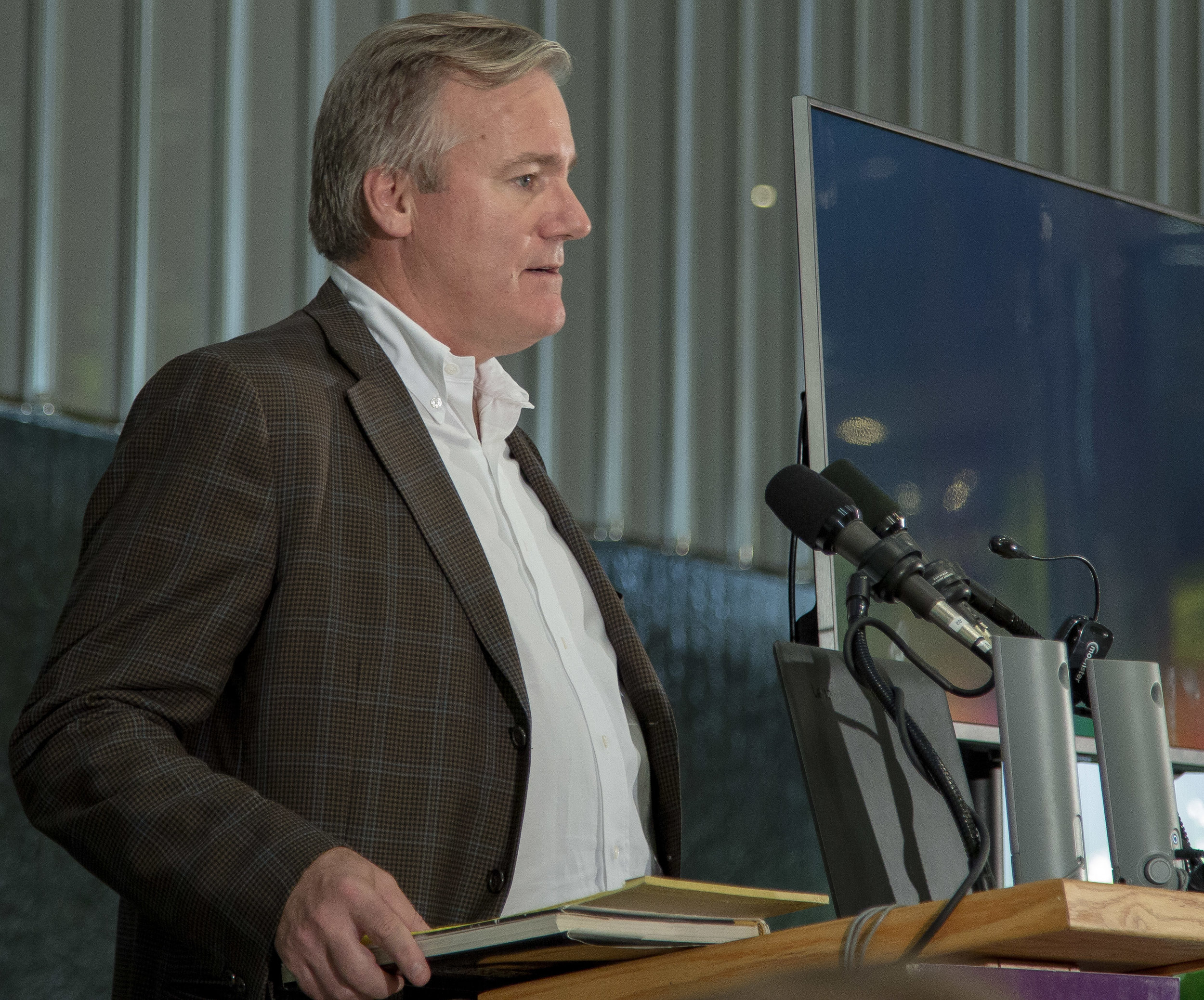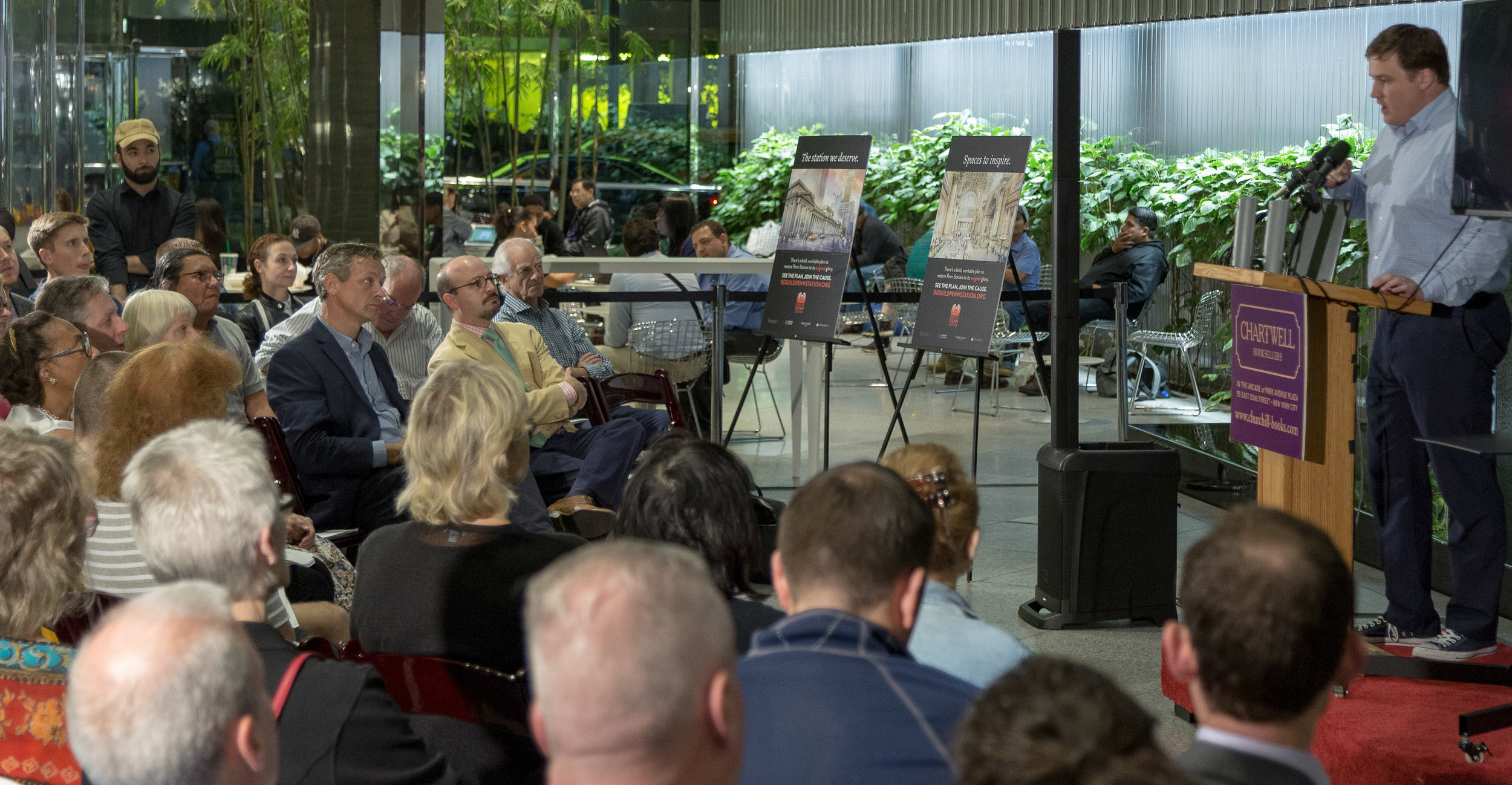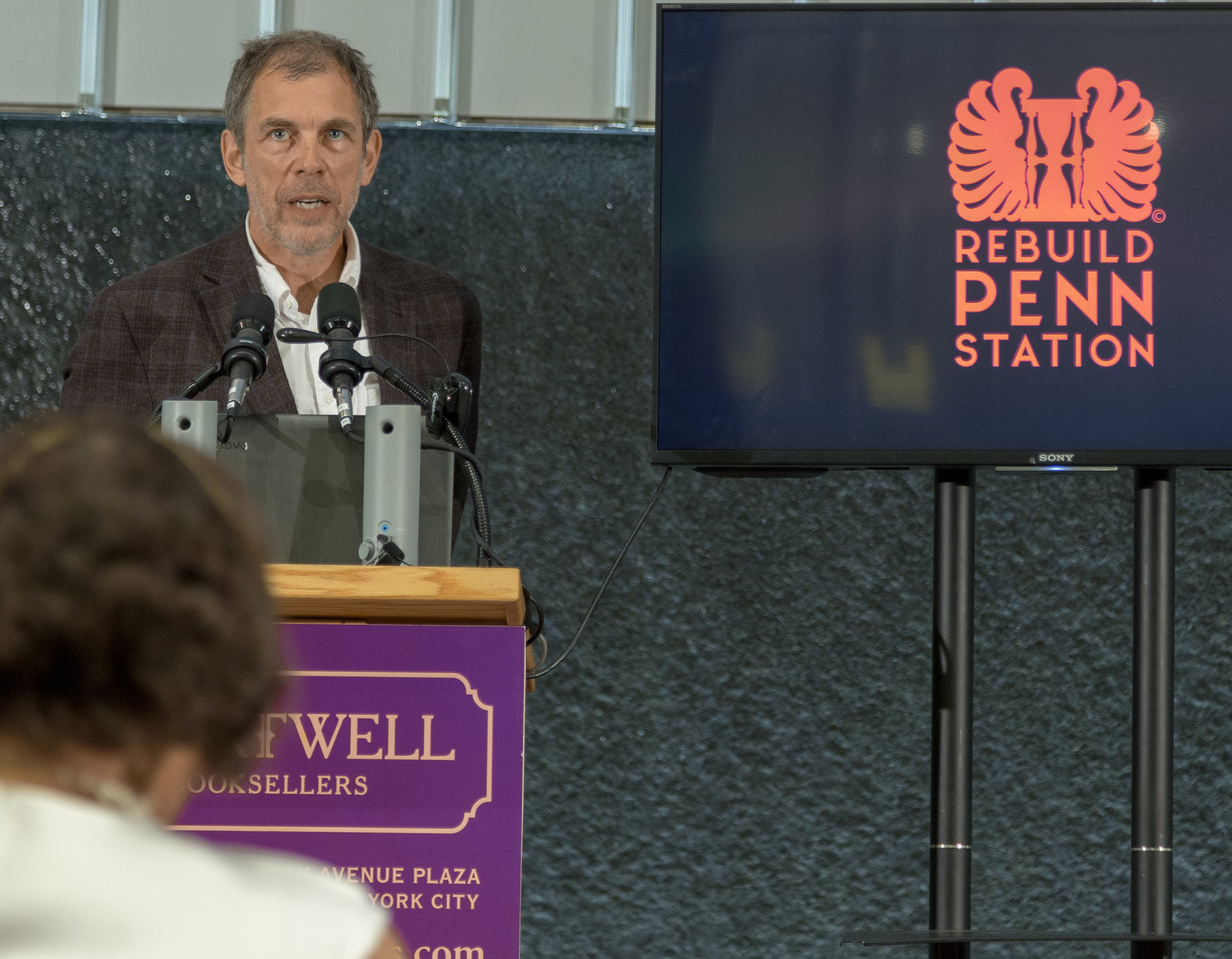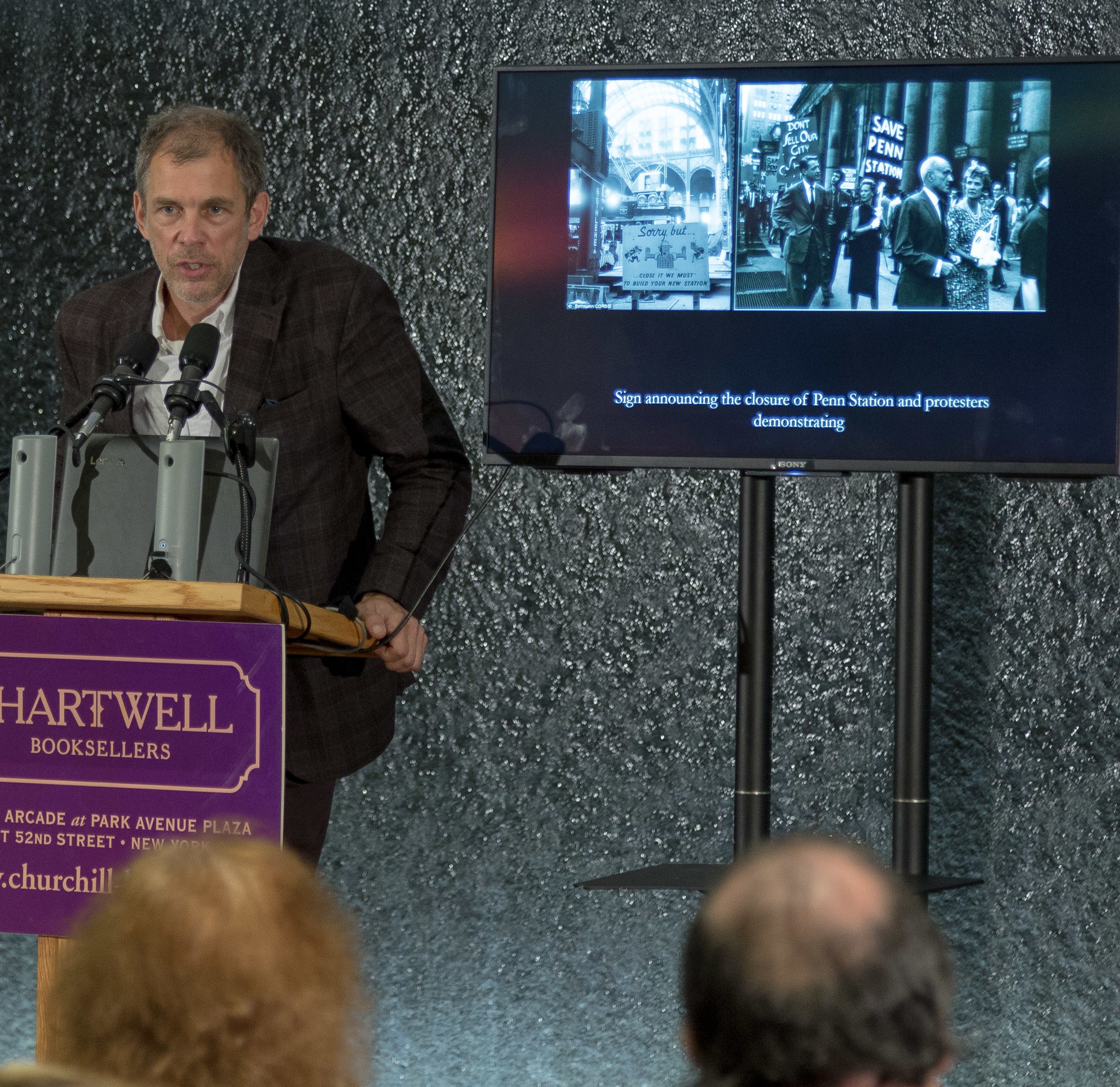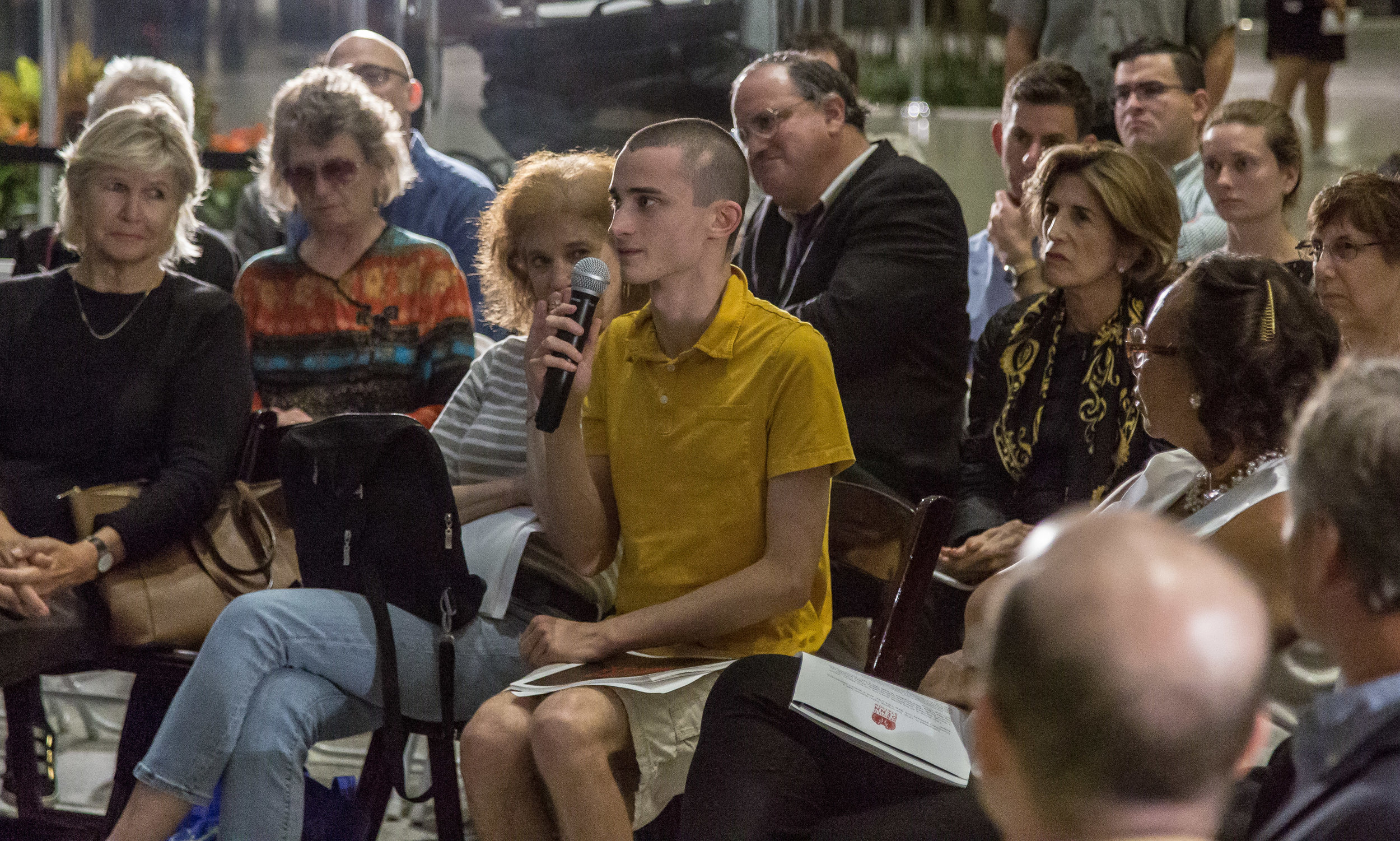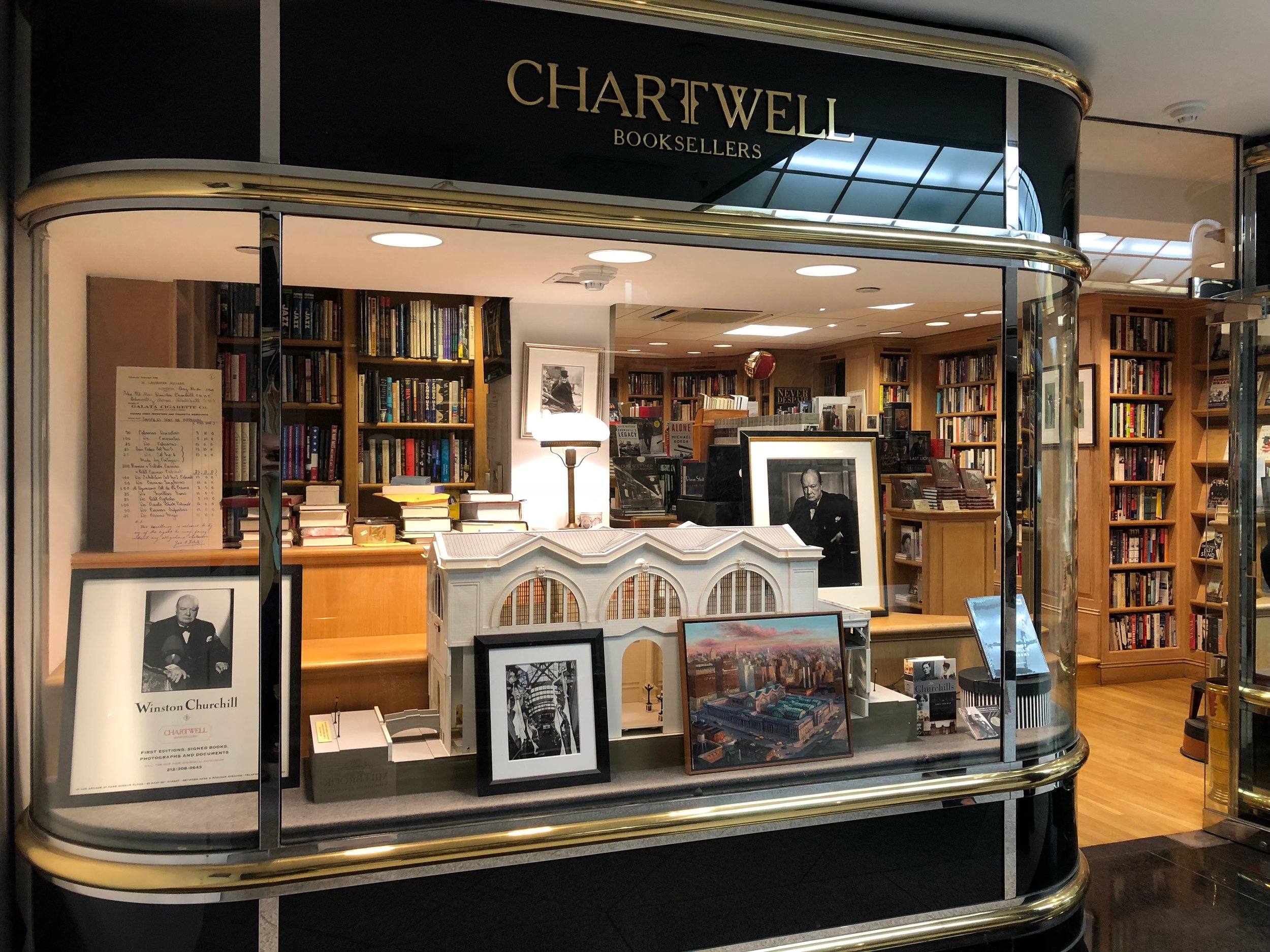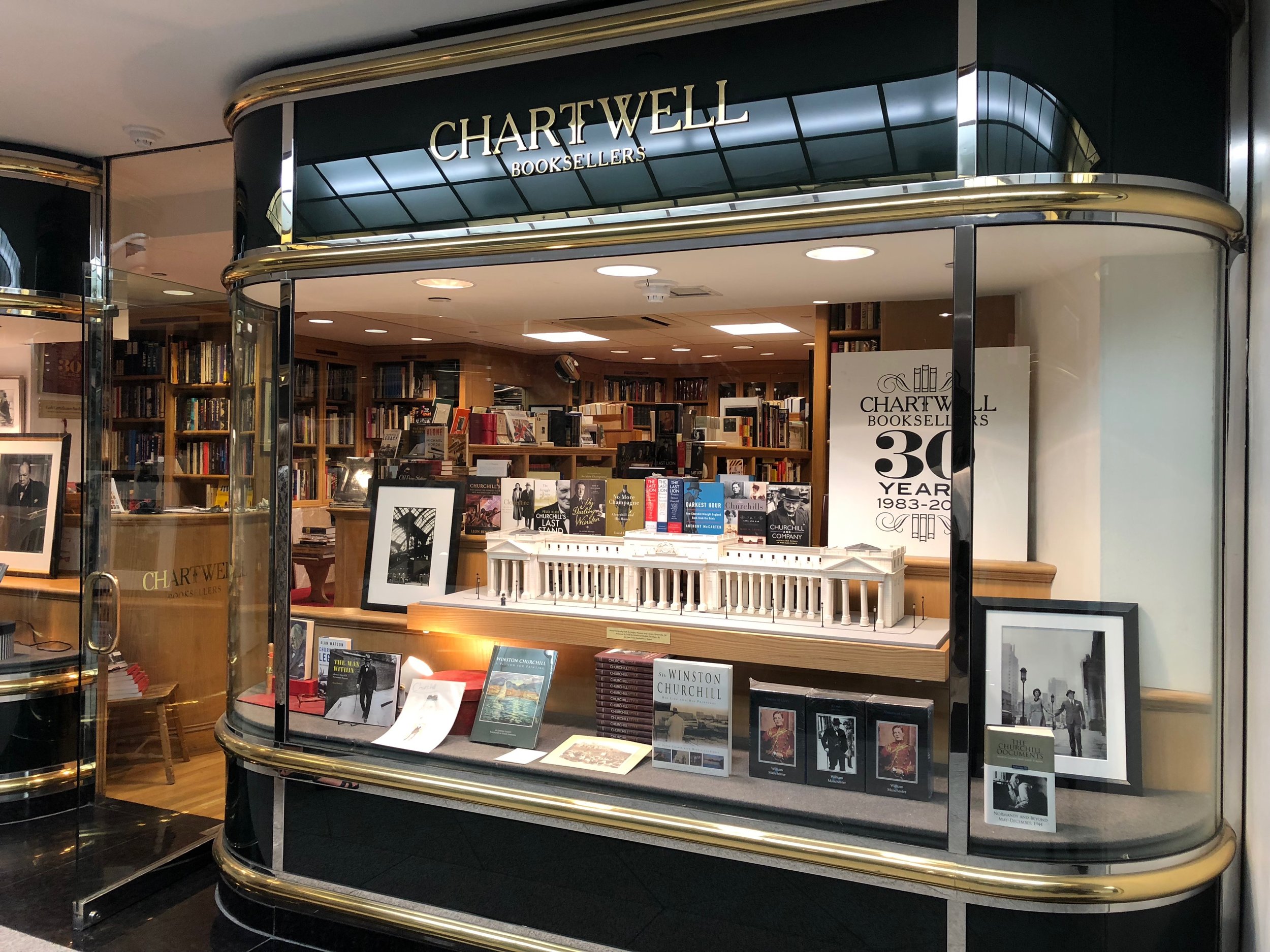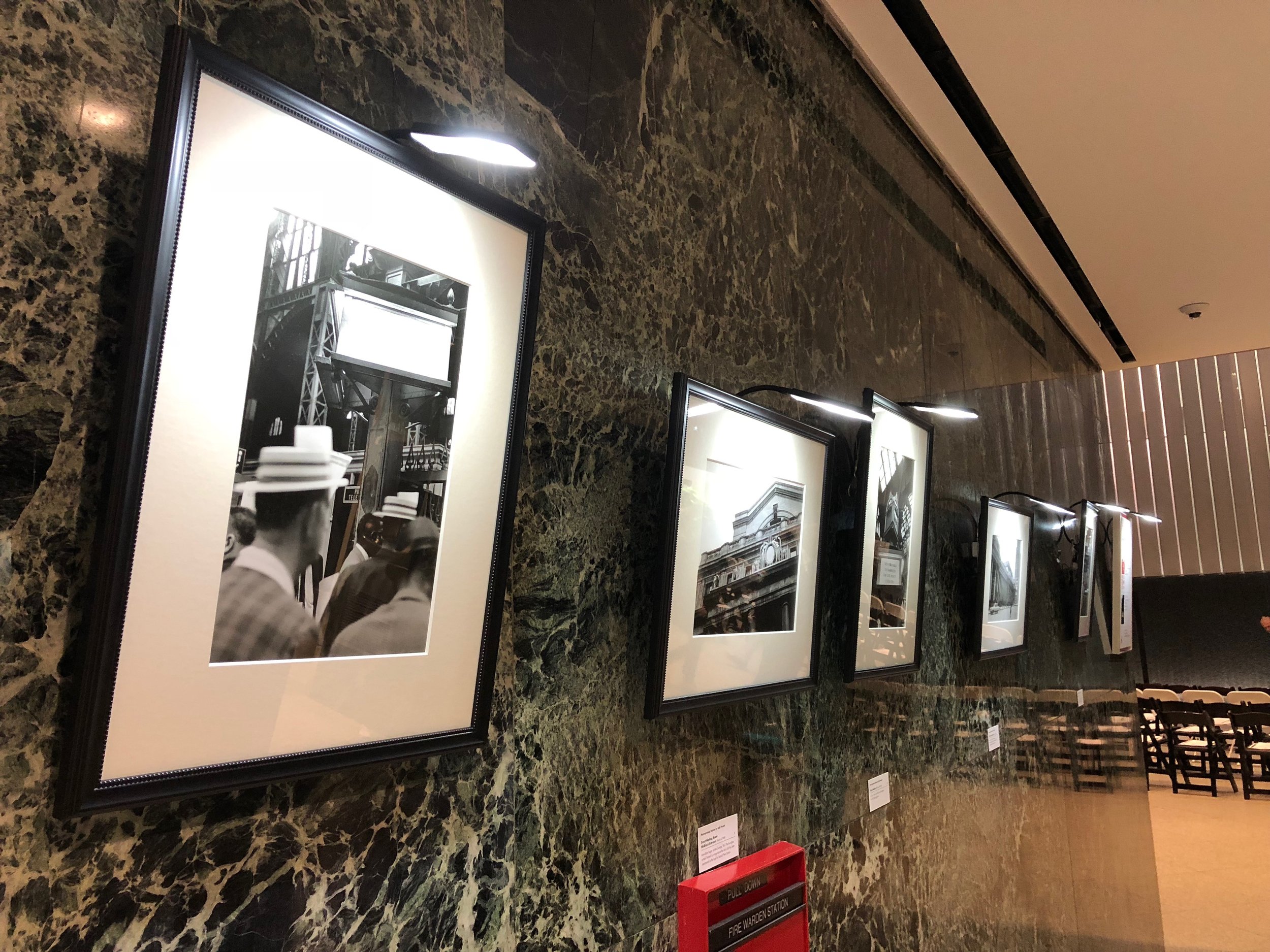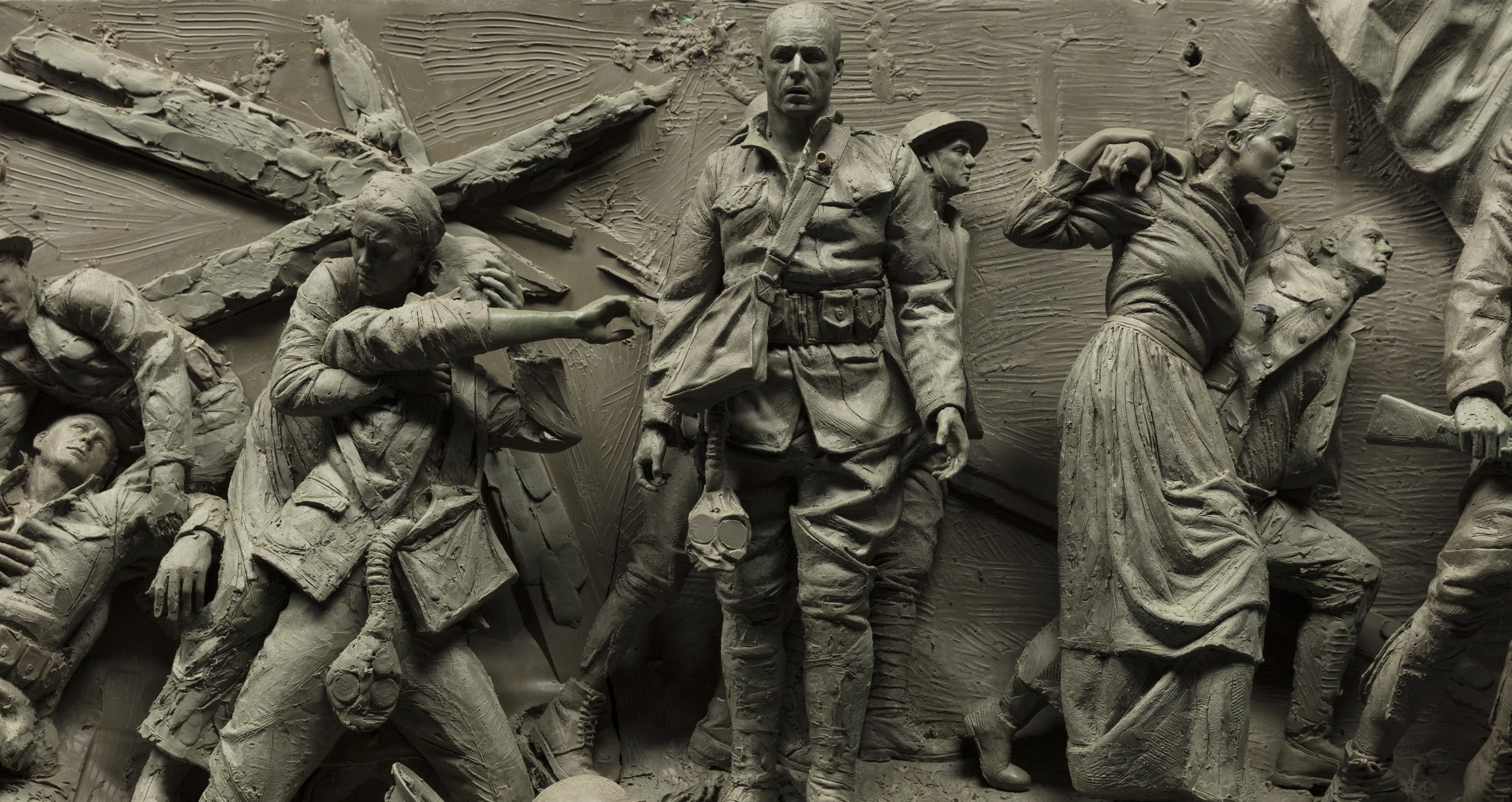On July 19, 2015, RealClearPolitics published the following article about the National Civic Art Society.
People Who Hate the Eisenhower Memorial
By Matthew Disler
Tourists milled around the Martin Luther King, Jr. Memorial last Friday, snapping photos in front of the 30-foot tall granite statue of the civil rights leader standing, arms folded, facing the Tidal Basin and the Washington Monument. Rapturous visitors wandered along the wall encircling the figure of King emerging from a mountainous slab of rock, engraved with a passage from his “I Have a Dream” speech: “Out of the mountain of despair, a stone of hope.”
Justin Shubow was having none of it.
“I think it’s an embarrassment for numerous reasons,” he stated bluntly, ticking off a litany of criticisms of the monument’s design: it was sculpted by a Chinese artist who didn’t speak English or know much about King; it ignores his religious background; it makes him look too angry. Shubow termed the quotations “second-rate” (“It’s as if you go to the Lincoln Memorial and don’t get the Gettysburg Address”) and noted that King is not wearing his wedding band.
This fierce critic is the president of the National Civic Art Society, an organization with some 100 members that has been at the forefront of the opposition to Dwight D. Eisenhower Memorial. The non-profit’s mission states that it is focused on educating the public about the classical tradition in Washington’s memorials and buildings and helping policymakers and planners continue this practice. Shubow and his organization decry the recent series of modernist memorials, which they think is highlighted garishly in famed architect Frank Gehry’s design for the Eisenhower Memorial.
It’s not the only one Justin Shubow disdains. The World War II Memorial? Shubow finds it “reminiscent of the architecture of fascist Italy,” with “Germanic wreaths,” “creepy eagles,” and a pointless fountain.
“It could easily be a Wehrmacht memorial,” he said.
Franklin Roosevelt’s Memorial? “I think it’s defeatist,” Shubow said, later adding, “The focal point [of the central statue] is his little dog. Everyone squats down and takes cutesy photos with it. It’s a piece of kitsch.”
The proposed Eisenhower Memorial, however, currently bears the brunt of his ire. Shubow and his group have become go-to sources for criticisms about the memorial in papers like The Washington Post, New York Times, and The Daily Beast, largely through their sheer doggedness. In 2011, the organization ran a shoestring-budget competition for an alternate to the Gehry design, “to suggest what a classical or traditional alternative might look like,” in Shubow’s words. He started submitting Freedom of Information Act requests about the Eisenhower Memorial Commission’s design competition, run by the General Services Administration, and in 2012 he penned a 154-page report disparaging the Gehry plan, from the design competition process (which critics like the group Right by Ikedenounce as closed and unfair) to the ballooning costs for the project. In 2013, he testified against it in a House Committee on Natural Resources subcommittee hearing.
“I think we have been focused and unrelenting, and I think we’ve had an excellent champion with Justin Shubow, who really has been a very capable leader in this endeavor and has been tenacious in his fight,” said Milton Grenfell, a director of NCAS and a Washington, D.C.-based architect. “We’ve sort of moved into de factoleaders.”
The NCAS derides the Gehry memorial as ungainly and ill-befitting the man who led the Allied Forces to victory in Europe in World War II and became the 34thpresident. The design’s most recent iteration features a 447-foot long, eight-story metal tapestry depicting a landscape in Eisenhower’s hometown of Abilene, Kan., as well as two free-standing columns and a “core” of statues depicting Eisenhower as general, president, and a young man gazing out at his future achievements.
The memorial has changed substantially since it was introduced and given preliminary approval by the Commission of Fine Arts in 2011 (it needs approval from both the CFA and the National Capital Planning Commission before construction starts). Initially, metal tapestries surrounded the memorial’s inner core on three sides; the statues of Eisenhower as general and president were bas-reliefs; and the statue of Eisenhower in the center of the memorial depicted him as a “barefoot boy,” in reference to a speech he gave soon after World War II.
Soon after the design was unveiled, Eisenhower family members began voicing their disapproval. That December, a Washington Post story quoted Susan and Anne Eisenhower, two of Ike’s granddaughters, speaking against Gehry’s proposal. After the piece ran, David Eisenhower—the only member of the family who sat on the Eisenhower Memorial Commission—resigned, explaining that he was concerned about a potential conflict of interest between his position and his new role as chairman of the Eisenhower Foundation (which runs the president’s library and museum).
In June of this year, the House Committee on Appropriations stripped all funding for the commission for the next fiscal year in its Interior-EPA appropriations bill and called for a “reset” on the memorial process, while the Senate committee allotted $1 million. In contrast, the NCPC had said that more than $70 million would be needed this year for construction to start.
“We’re hoping that in the budget compromise, the Senate will side with the House and call for a total reset of the design with an open, democratic competition,” said Shubow. “And that’s going to include a classical design, one that comports with the best of our memorial tradition.”
On July 9, the NCPC approved the final design for the memorial, with only one member dissenting. Former Sen. Bob Dole was one of the leading voices in support of the memorial, calling on the commissioners in a written statement to approve the design quickly in the name of World War II veterans—“a million aging American heroes who revere Ike and want to honor him before we are all gone.”
In his remarks at that meeting, Shubow attacked the nighttime lighting plan, arguing that the steel tapestry “will look like a glowing billboard or movie screen. It’s distracting brightness will undeniably ruin the vista to the Capitol.”
Broadly, the NCAS’s principal grievance is aesthetic, although both Grenfell and Shubow admitted that their complaints go deeper. To them, Gehry’s memorial is too modernist, and in its attempts to be something new and never-before-seen it misses the point about what a monument is supposed to do.
A good monument, Grenfell explained, should be easy to understand and beautiful.
“In terms of beauty—frankly, most modern artists don’t even think of the word,” he continued. “They think of the word ‘challenging’ and ‘cutting edge’ or something, but not ‘beauty.’ I think we need to reconnect with the great tradition of monument and architecture to go forward—not to reject it wholeheartedly, but to continue with it and evolve with it the way civilizations have always addressed monuments and art.”
Shubow concurs. “For what the public knows, it’s mainly aesthetic,” he says. “But for people who understand more, it’s about the spending, and also there’s the competition.”
So how about the Jefferson Memorial, he is asked. Does that pass muster? Shubow doesn’t hesitate: “I think it’s magnificent








